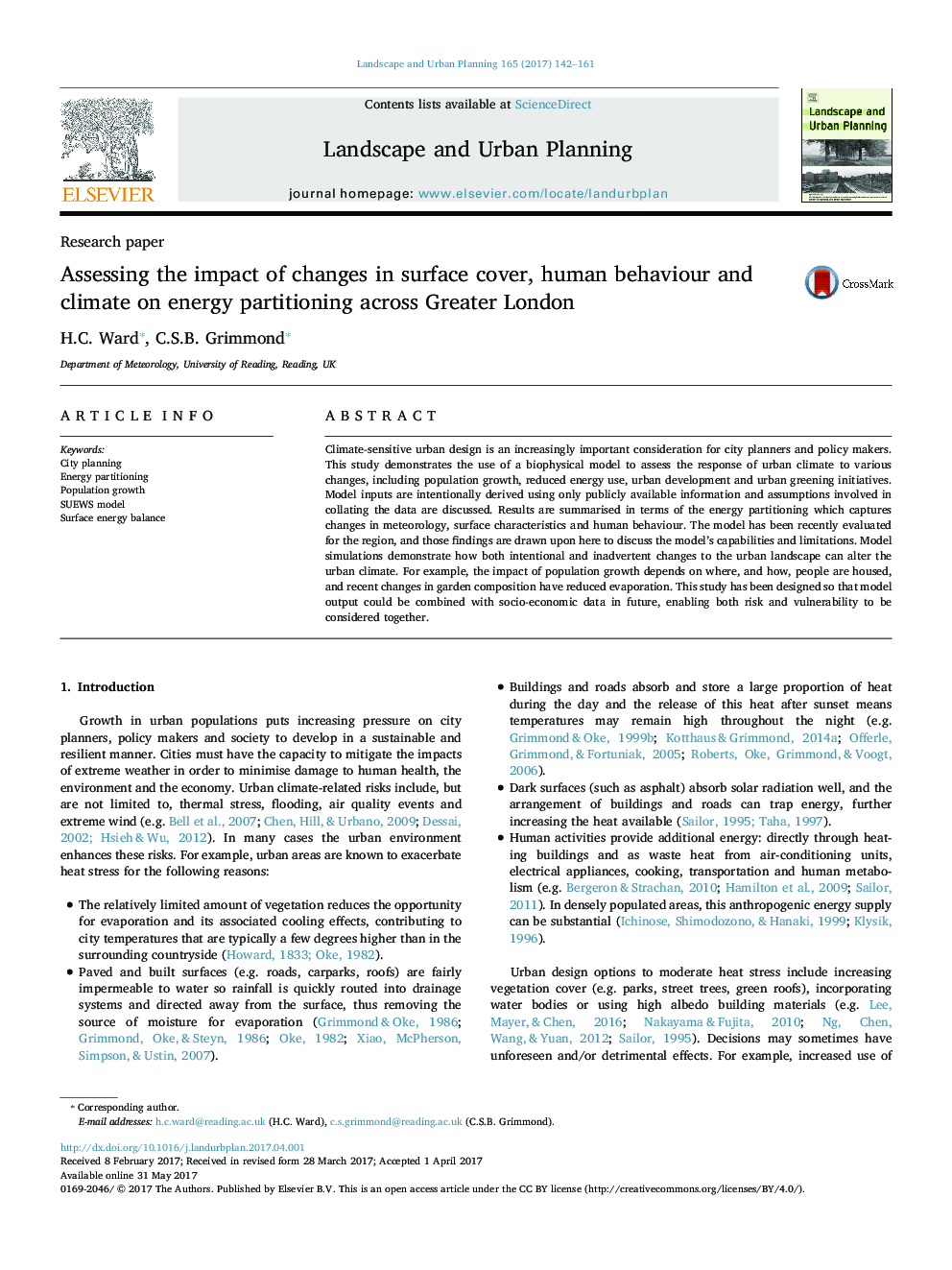| Article ID | Journal | Published Year | Pages | File Type |
|---|---|---|---|---|
| 5115168 | Landscape and Urban Planning | 2017 | 20 Pages |
Abstract
Climate-sensitive urban design is an increasingly important consideration for city planners and policy makers. This study demonstrates the use of a biophysical model to assess the response of urban climate to various changes, including population growth, reduced energy use, urban development and urban greening initiatives. Model inputs are intentionally derived using only publicly available information and assumptions involved in collating the data are discussed. Results are summarised in terms of the energy partitioning which captures changes in meteorology, surface characteristics and human behaviour. The model has been recently evaluated for the region, and those findings are drawn upon here to discuss the model's capabilities and limitations. Model simulations demonstrate how both intentional and inadvertent changes to the urban landscape can alter the urban climate. For example, the impact of population growth depends on where, and how, people are housed, and recent changes in garden composition have reduced evaporation. This study has been designed so that model output could be combined with socio-economic data in future, enabling both risk and vulnerability to be considered together.
Related Topics
Life Sciences
Agricultural and Biological Sciences
Ecology, Evolution, Behavior and Systematics
Authors
H.C. Ward, C.S.B. Grimmond,
